Paraguay
Traditional indigenous knowledge meets new technologies
How knowledge-sharing impacts the protection of forests
“The forest was given to us. We live from the forests. It gives us food, shelter, materials to build our houses and medicinal plants to cure the members of our community. That is why we must take care of the forest,” says Cornelia Flores, the indigenous and spiritual leader of Isla Jovai Teju, one of the Mbya Guarani communities in Caagazu, Paraguay.
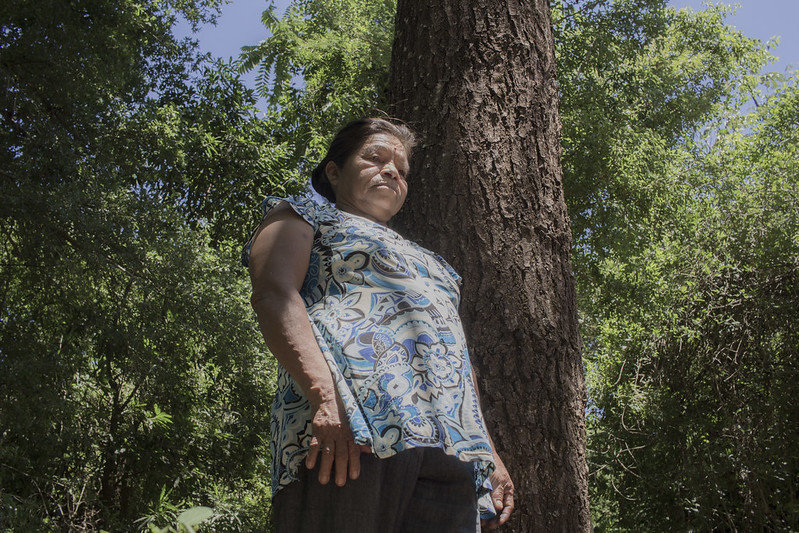
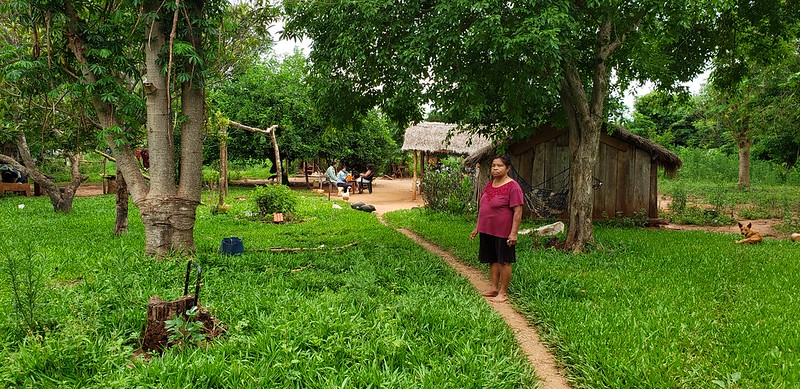
“I plant trees and I make sure we maintain the medicinal plants, as well as the plants the animals need for their diet. It is an equilibrium that needs to be maintained continuously. It is also about knowledge – ancestral indigenous knowledge – that is slowly getting lost with the forests disappearing.”
Cornelia
Explains how she, as a leader of her community, still cures people with traditional medicine.
However, she is afraid that this knowledge will be lost when she is no longer around. She added: “We used to travel to other remote communities to share our knowledge about the forest and the plants and learn from other spiritual leaders, but now we cannot do that anymore as the forest barely exists. There is no shelter, no shade, no water, and no fruits on our way. It is impossible to walk for days if you only come across large soya fields”.
She also feels like she is losing influence on the youth in her community. “It is hard to transmit traditional knowledge now. The youth go to regular schools and outside of school, they only seem interested in their mobile phones. They can spend hours on their phones, instead of learning about the plants and the forests. It would be beneficial for our communities if specific indigenous schools would exist, in which our traditional knowledge can be transmitted. I try to share with the youth as much as I still can by setting a good example by planting trees and taking care of the forest.”
“Instead of using it only for Facebook or WhatsApp, my phone is also my tool to monitor the forest. I benefited from several trainings and I am now able to use my phone to support my community in monitoring the forest and our territory by using several applications installed on my phone, something I am really proud of.”
Rumilda Fernández
A young indigenous forest technician of the same community begs to differ and says that her smartphone serves more than just entertainment purposes.
Rumilda is one of the indigenous youth who benefited from a series of trainings that started in 2017 in Paraguay to strengthen local capacity for community-monitoring and the management of natural resources and governance of the territory organized in four Mbya Guaranies communities. She was trained by indigenous technicians from Panama, a team from the United Nations Food and Agriculture Organization (FAO), and other partner institutions from Paraguay on topics like Geographic Information System (GIS), mapping, natural resources management and the use of mobile applications.
Since 2015, Rafael Valdespino – an indigenous technician from Comarca Embera-Wounaan, Panama – has been part of the capacity-development program on the community monitoring of forests. After having attended several trainings he became an instructor. He supported his own community and other communities in Panama and now travels to other countries to share his experience regionally.
“I was born in the forest and I have always lived in my comarca, remotely and isolated. My grandfather and my father taught me about the forest, the plants, and how to protect and take care of them. Taking care of the forest comes naturally to me,” he says.
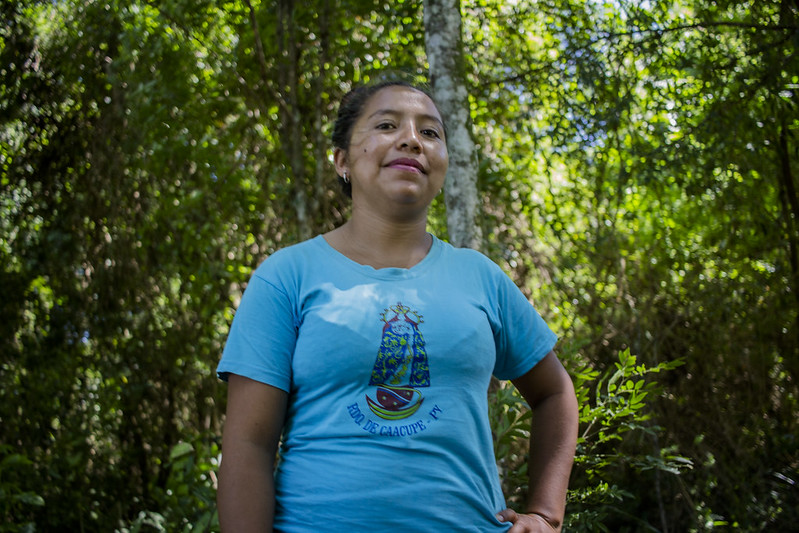
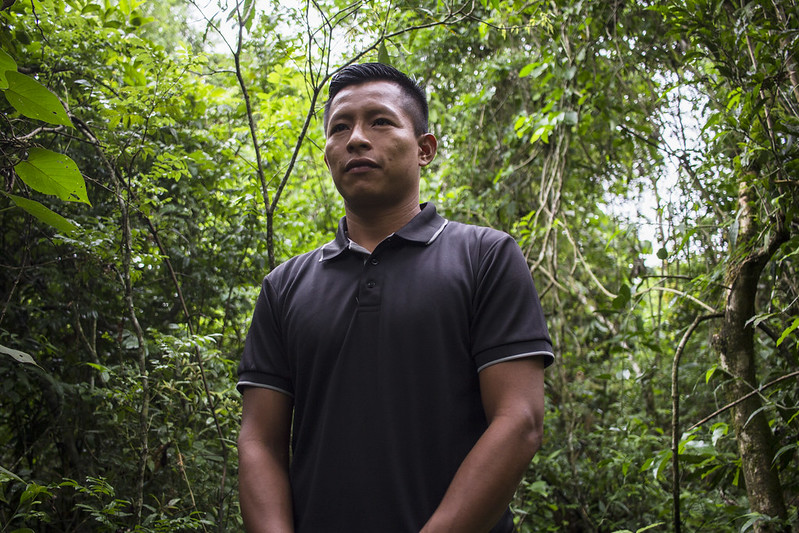
“Just as the forest needs me to protect it, I also need the forest to live. Combining ancestral knowledge with new technologies has made me a stronger protector of our indigenous forests.”
Rafael Valdespino
Indigenous Technician and Trainer from the Comarca Emera-Wounaan in Panama
Training other indigenous youth is something Rafael really enjoys. He considers it an important contribution that he can make to motivate young people not to lose interest in their environment and actively engage in protecting it.
Through South-South exchanges, peers can learn from each other, discuss their work, address hurdles together and improve the effectiveness of their work. Experiential knowledge is also shared among peers in their own words, creating a collaborative and reciprocal learning environment.
“I learned a lot from the exchanges we had with other indigenous technicians from Panama coming to Paraguay to share their knowledge with us,” says Rumilda. “It is so inspiring to see what they were able to accomplish. We not only learn from what Rafael is sharing with us, but it also gives us hope to know that he also had setbacks. To learn that it is not going to change in one day, but that it is a process, and sometimes a long one, was important for me. It motivates me and the other youth to persevere, to continue on our paths. I hope more communities in Paraguay will be able to benefit from these trainings.”
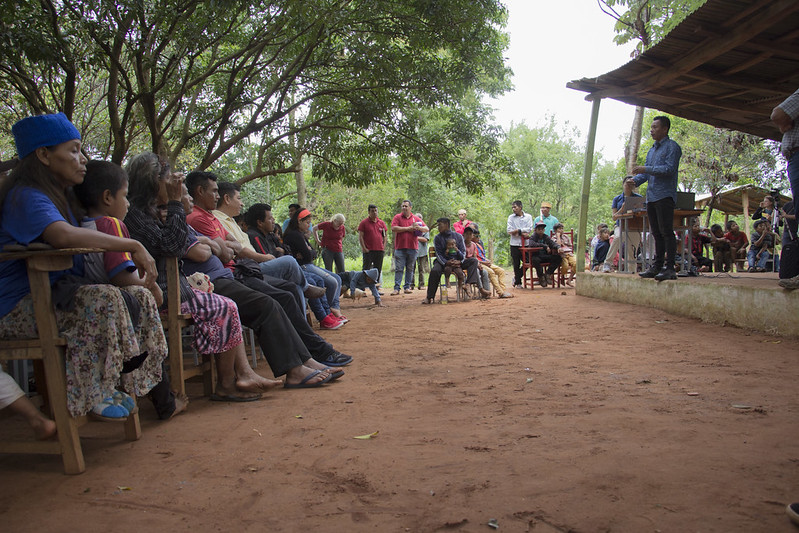
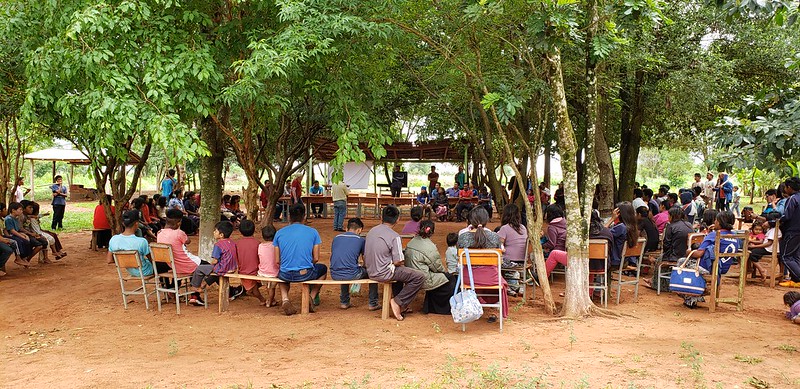
State of the Forests in Paraguay
Paraguay, Argentina and Bolivia are home to the second-largest forest ecosystem in South America, and home to many indigenous communities who depend on the forests for their livelihoods. However, pressure continues on the forests, making life for these communities increasingly difficult. The region has one of the highest rates of deforestation in the world with roughly 20 percent of the Gran Chaco forest being converted into farmland or grazing land since 1985. The Gran Chaco forest is also home to thousands of plant types and hundreds of species of birds, mammals and reptiles.
Paraguay’s National REDD+ Strategy
Paraguay’s National REDD+ Strategy entitled the “National Forest Strategy for Sustainable Growth” proposes a vision that underpins broader sustainable development approaches based on productive systems respecting natural capital and forest resources.
In November 2019, the Green Climate Fund (GCF) approved the submission by Paraguay of 26 million tons of CO2 of forest emission reductions for a total of $72.5 million USD. The approval, which was announced at the GCF’s 24th Board meeting, recognized the successful efforts of Paraguay in reducing greenhouse gas emissions from deforestation and forest degradation between 2015 and 2017. The results-based payments will reduce carbon emissions through the conservation of forest cover, promotion of sustainable agriculture, participation of the private sector and the strengthening of indigenous peoples and rural communities as guardians of the forests.
The South-South Exchange described in this article is part of the UN-REDD Programme and the “Innovative Models for Public Investment in the Sustainable Management and Governance of Natural Resources of Indigenous Communities” Project, implemented by FAO Paraguay in collaboration with the Paraguayan Indigenous Institute (INDI), the National Forest Institute (INFONA), the Ministry of Agriculture and Livestock (MAG), Ministry of Environment and Sustainable Development (MADES), National Institute of Rural and Land Development (INDERT), Ministry of Social Development (MDS) and the municipalities.
Story by: Alice Van der Elstraeten, Regional Knowledge Management and Communications Specialist for Latin America and the Caribbean, UN-REDD Programme
Photographs by: Leti Galeano, Nelson Roman, Alice Van der Elstraeten
Videos by: José Elizeche

